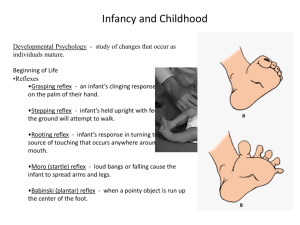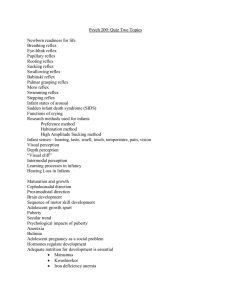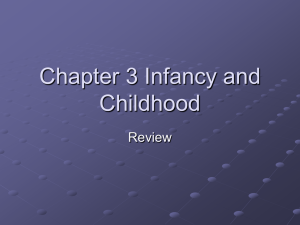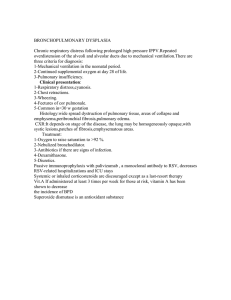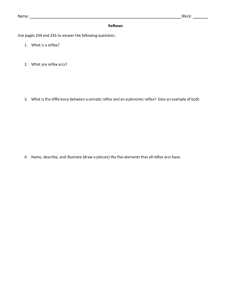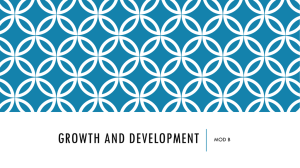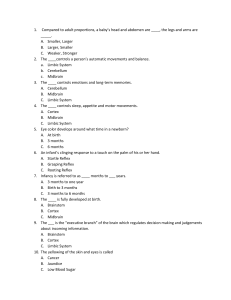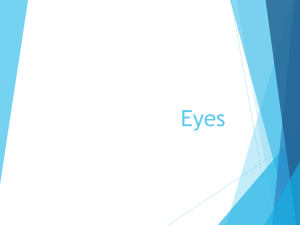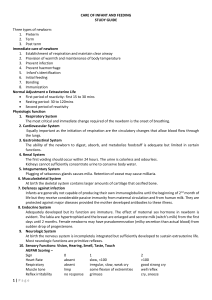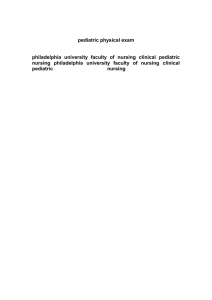INFANCY WHAT CAN BABIES DO? WHAT DO BABIES UNDERSTAND?
advertisement
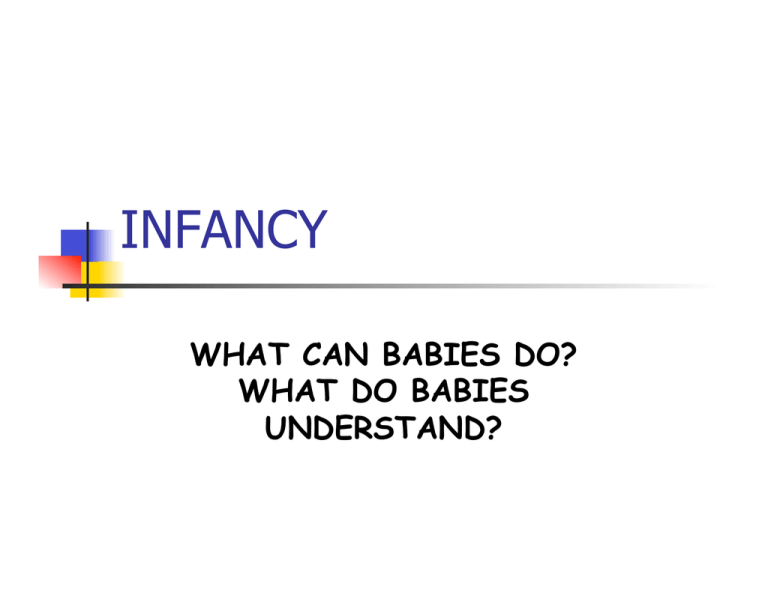
INFANCY WHAT CAN BABIES DO? WHAT DO BABIES UNDERSTAND? Physiological states QUIET SLEEP ACTIVE SLEEP ALERT WAKEFULNESS ACTIVE CRYING EARLY NEONATE REFLEXES Sucking reflex/rooting reflex Moro’s reflex/startle response Infant lifts leg when held upright with feet barely touching a surface Grasping reflex Infant reaction to a loud noise Walking reflex Infants turn their heads and begin sucking when touched lightly near lips Infant will grasp objects placed on its palms Babinski reflex Infant fans toes when stroked on bottom of feet How do we know what babies can understand or see? Habituation paradigm Monitor physiological or behavioral responses like sucking or heart rate Monitor how long the baby fixates his or her vision on an object. What can babies see? Visual Acuity -at birth about 20/300 6 months 20/100 or better Color perception - Newborns seem to distinguish red and white; by two months full color vision is present. http:// www.pbs.org/wnet/brain/episode1/ infantvision/flash.html Visual preference Fantz – classic studies- bull’s eye, colored discs, newsprint, and a simple face pattern. Motor development cephalocaudal proximodistal Fine motor Skills that involve small body movements. Require coordination of complex muscle groups. From grabbing To fingering To holding Gross Motor Skills Lifts head Rolls over Sits propped up Sits alone Stands holding on Stands alone Walks alone Walks alone Well Walks backwards Walks up steps Kicks ball forward go back go back Development of the Brain Myelination Exuberant synaptogenesis Primary motor area develops first, especially those that control the arms and the trunk. Frontal lobes continue to develop throughout childhood. Piaget and Constructivism Construct reality from experiences Two inborn intellectual functions Organization Adaptation Assimilation: use existing schemes Accommodation: modify schemes – In class example of the term “schemes” (schema) Cognitive disequilibrium stimulates growth Figure 7.1 Cognitive Developmental Milestones Piaget’s model 0-2 Sensorimotor period Key achievement is object permanence: recognition that object or person continues to exist when out of sight go back
